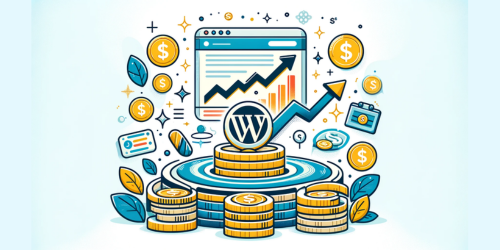In the intricate web of WordPress development, understanding the WP_PLUGIN_DIR constant is akin to mastering a secret code. At its core, WP_PLUGIN_DIR serves as a crucial reference point within WordPress’s architecture, pinpointing the exact location of your website’s plugin directory on the server. This seemingly simple constant holds immense power in streamlining plugin management and customization, serving as a foundation for a myriad of functionalities that enhance the user experience.
The impact of WP_PLUGIN_DIR extends far beyond mere file organization. It’s a lynchpin in the grand scheme of website customization and management. By providing a definitive and unambiguous path to the plugin directory, it paves the way for developers and website administrators to effectively tailor their sites. This customization ability, harnessed through WP_PLUGIN_DIR, is a pivotal factor in WordPress’s widespread popularity, offering an unmatched level of flexibility and control over website functionalities and aesthetics.
Understanding WP_PLUGIN_DIR is not just about knowing a file path; it’s about unlocking the potential of WordPress as a dynamic and adaptable platform, capable of catering to diverse needs and visions.
Key Takeaways:
- Understanding
WP_PLUGIN_DIR - Importance in WordPress directory structure
- Flexibility and customizability
- Key constants and functions
1. Navigating WordPress Directory Structure: Essentials for Developers
The architecture of WordPress’s directory is like a well-organized library, where each book is exactly where you expect it to be. At its heart lies the wp-content directory, a hub for themes, plugins, and uploads. Within this, the wp-content/plugins directory is crucial, housing all the plugins that add functionality to a WordPress site. Understanding the role and location of these directories is paramount for developers.
Each plugin’s placement within this structure is not arbitrary. It directly influences the plugin’s functionality and integration with WordPress. Correct directory placement ensures seamless interaction between the plugin and WordPress core, while incorrect placement can lead to functional discrepancies or even security vulnerabilities. Learn more about WordPress directory structure in the WPPedia’s article.
2. The Flexibility of WP_PLUGIN_DIR: Custom Paths and Usage
The power of WP_PLUGIN_DIR lies in its flexibility. Customizing the plugin directory path allows developers to tailor the site structure to their specific needs. This can range from enhancing security by obscuring the default paths to accommodating unique server configurations. Changing the default plugin directory, though not common, can be instrumental in creating a highly customized WordPress environment.
WP_PLUGIN_DIR enriches WordPress with a level of adaptability that few content management systems can match. This flexibility extends from simple website personalization to complex, enterprise-level content management solutions. For insights on customizing WordPress paths, How to get WordPress plugin Directory URL? offer extensive guides.
3. Key Constants in WordPress: Understanding Their Use and Restrictions
In WordPress, constants like WP_CONTENT_DIR and WP_PLUGIN_DIR are the signposts guiding the way through the system’s directories. These constants are essential for themes and plugins to interact correctly with the WordPress core. To know more about WP_Content_Dir WPPedia’s this article gives you a complete guidance.
However, using these constants comes with a set of guidelines to avoid common pitfalls. Misuse can lead to issues like broken paths or security vulnerabilities. Best practices involve understanding the purpose of each constant and applying them correctly within your development workflow. The WordPress Developer Handbook provides comprehensive guidance on these constants.
4. Critical Functions for Plugin Path Management
The plugin_dir_path() function in WordPress is a crucial tool for developers. It provides an accurate path to the directory of a particular plugin file. This function is essential for including files within a plugin, ensuring that scripts and styles are correctly enqueued and that includes are done correctly.
Effective use of plugin_dir_path() requires understanding its nuances and application in different scenarios. For practical examples and usage cases, refer to the WordPress Function Reference.
5. Advanced Customization: Moving the Plugin Directory
Moving the WordPress plugin directory is a task for the seasoned developer. It involves modifying the wp-config.php file to define a new path for WP_PLUGIN_DIR. This process can enhance security or accommodate specific hosting environments. Finding WordPress Plugin Directory You need to dive into this.
The key is to ensure stability and performance are not compromised during or after the move. A step-by-step guide for this process can be found on WordPress Stack Exchange, providing insights into best practices for such advanced customization.
6. Conclusion: Leveraging WP_PLUGIN_DIR for Optimal WordPress Management
In the realm of WordPress, WP_PLUGIN_DIR emerges as a cornerstone for effective website management. It’s not just a pathway to the plugins; it represents a gateway to enhanced flexibility, security, and organization within your WordPress ecosystem. By grasping the significance of the WordPress directory structure and the powerful constants and functions at your disposal, developers and website managers can unlock the full potential of their sites.
Embracing these tools and best practices ensures a robust, secure, and efficient WordPress environment, tailored to the unique demands of each project. In essence, WP_PLUGIN_DIR is more than a constant; it’s a symbol of the adaptability and power WordPress offers to those who know how to wield it wisely.
7. FAQ Section
Q: How do I find out what plugins a WordPress site uses?
You can identify the plugins a WordPress site uses by viewing the page source and looking for /wp-content/plugins/ in the URLs, or by using online tools like BuiltWith.
Q: What files should be in WP admin folder?
The WP admin folder typically contains core administrative files for WordPress, including PHP scripts for dashboard functionality and other management-related tasks.
Q: What is the plugin directory in WordPress?
The plugin directory in WordPress, usually found at wp-content/plugins, is where all the individual plugin folders and files are stored. WPPedia’s article on wp-contect/plugins provides you a more comprehensive insight.
Q: What is the __DIR__ in WordPress?
In WordPress, __DIR__ is a PHP constant that returns the full directory path of the script it’s used in, helping with file path references in plugins and themes. For more insights You can also take a look into Find WordPress Plugin Directory in PHP at WPPedia.



